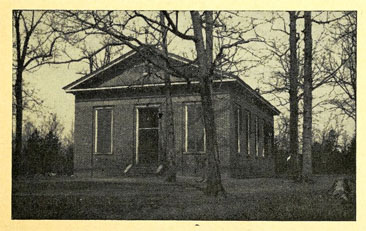5 Sept. 1774–12 Dec. 1857
James Mebane, legislator, was probably born at Hawfields, Orange County, one of four sons of Alexander, Jr., and Mary Armstrong Mebane. His father and uncles William, James, John, and Robert were active in the American Revolution, most of them serving as colonels in the North Carolina militia.

Nothing is known of Mebane's early education, though it is likely that he studied under the Reverend Henry Patillo. In 1795 he was one of the first students to enter The University of North Carolina, where he served as the first president of the Dialectic Literary Society; for over a century the society displayed his portrait in a prominent location in its hall. However, he left the university in 1797 without a diploma.
Mebane married Elizabeth Kinchen (1778/79–7 Aug. 1832), and the couple had five sons, including Giles Mebane, and one daughter.
His political career began with his election to the House of Commons in 1798; he was reelected in 1801, 1803, 1818, 1820, 1822, 1823, and 1831. During the 1820–21 term he was speaker. In addition, he served in the state senate from 1808 to 1811 and in 1828. In the senate Mebane sponsored the Electoral Act of 1811, which would have given the choice of presidential electors to the state legislature.
Mebane served on the board of trustees of The University of North Carolina from 1811 until his death. He was buried beside his wife in the second graveyard of Hawfields Presbyterian Church in Alamance County.